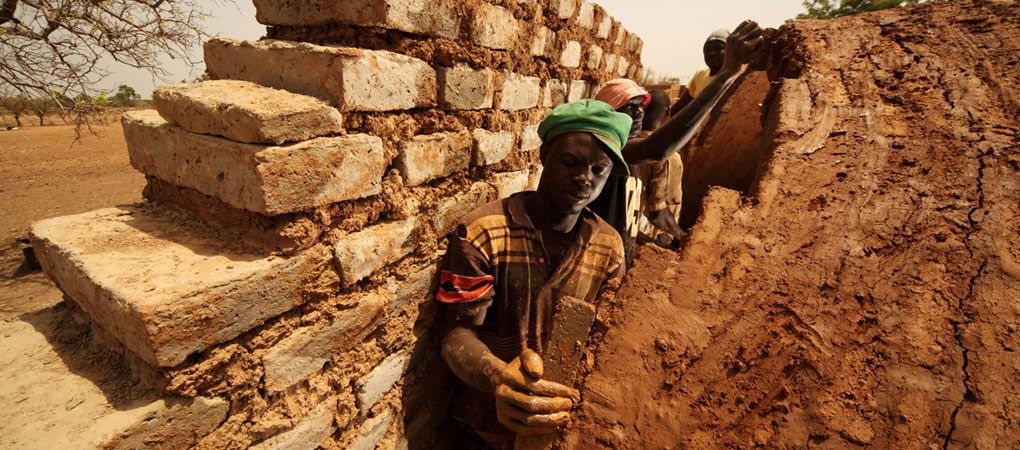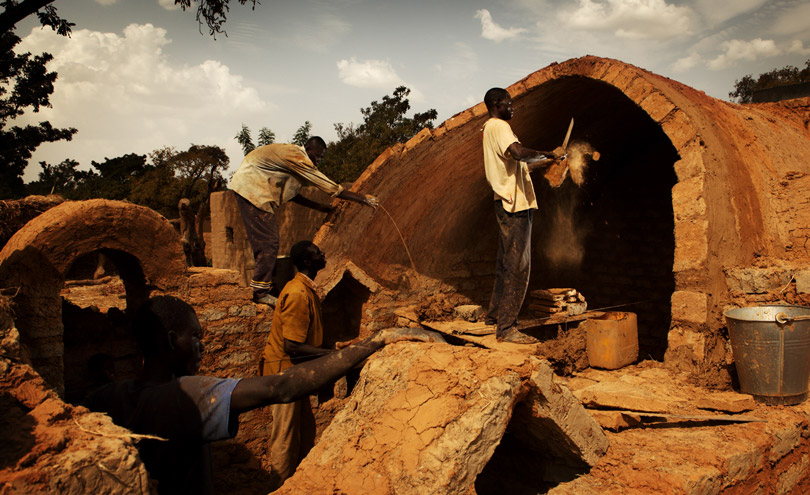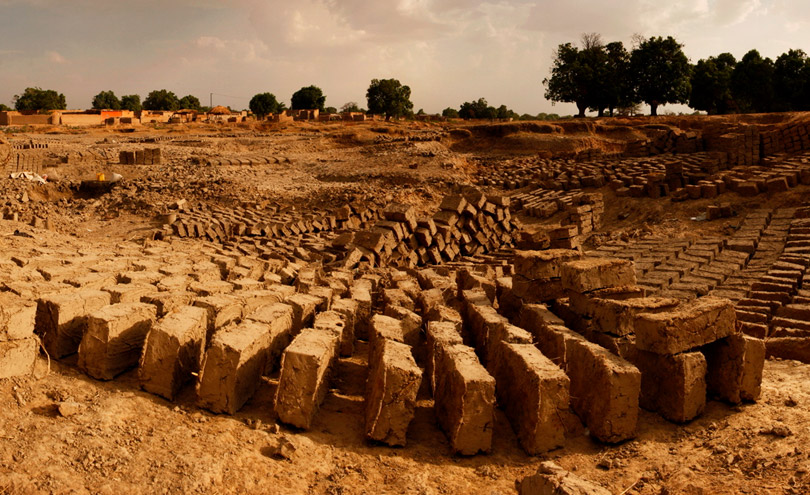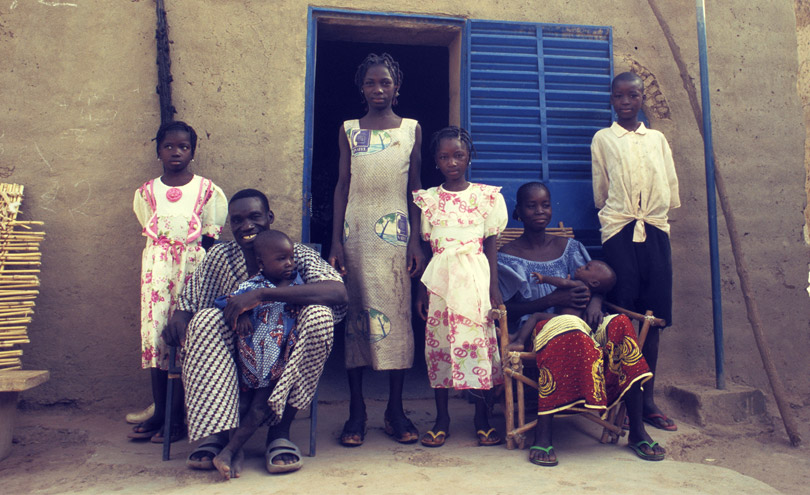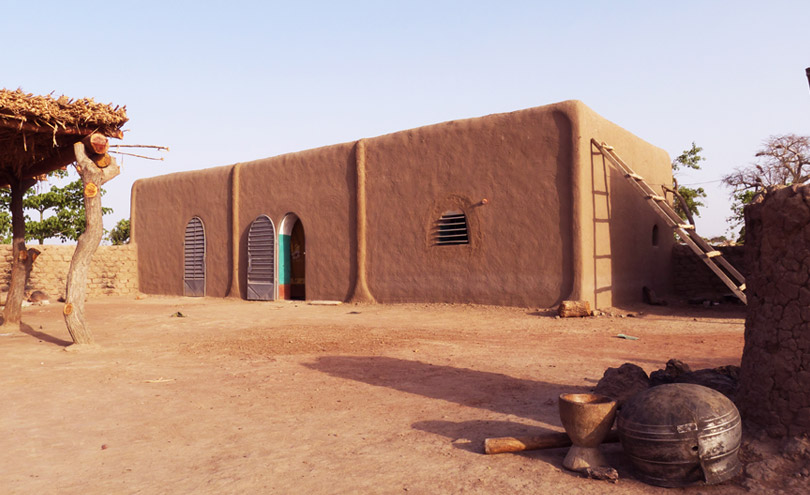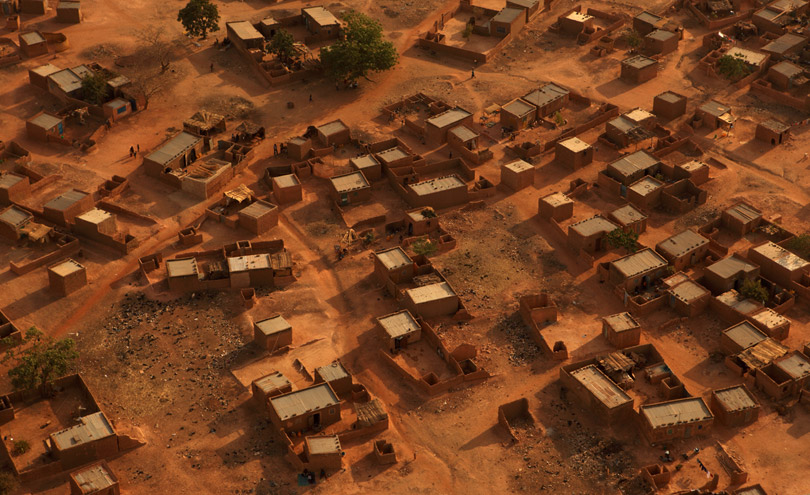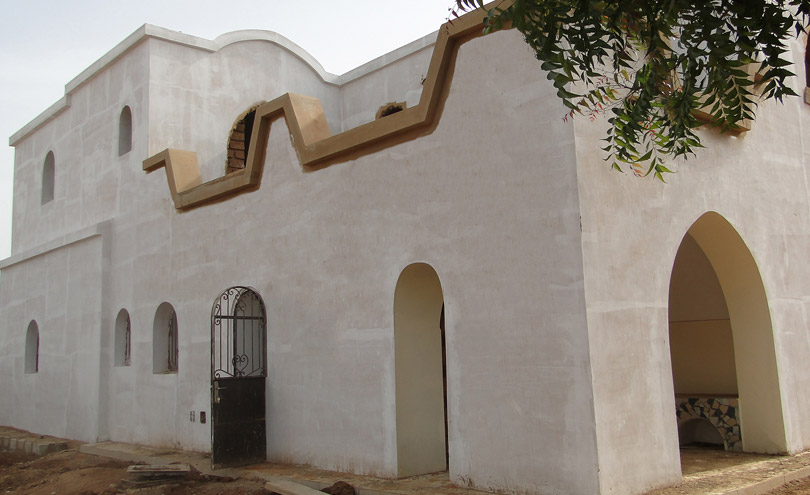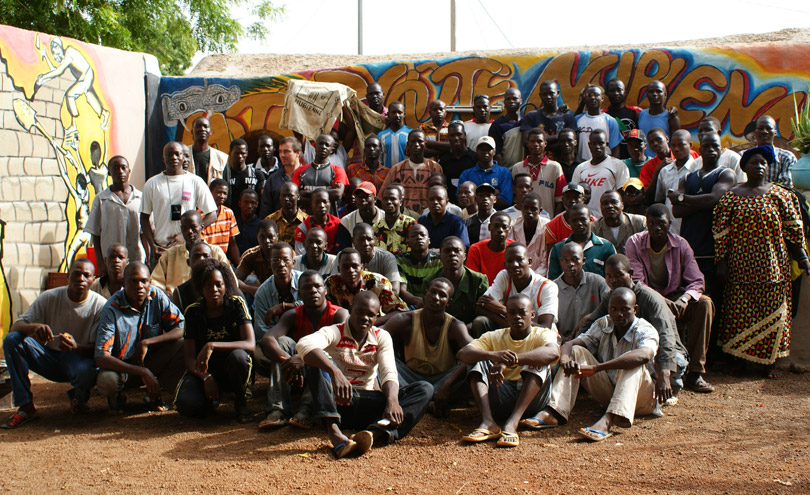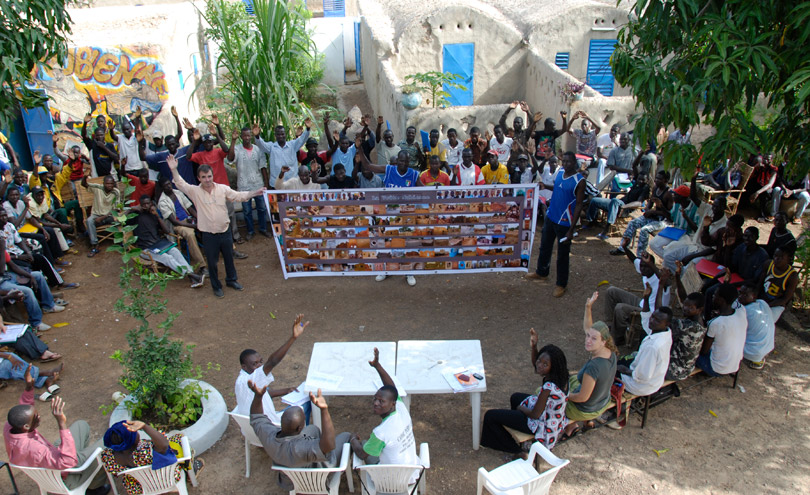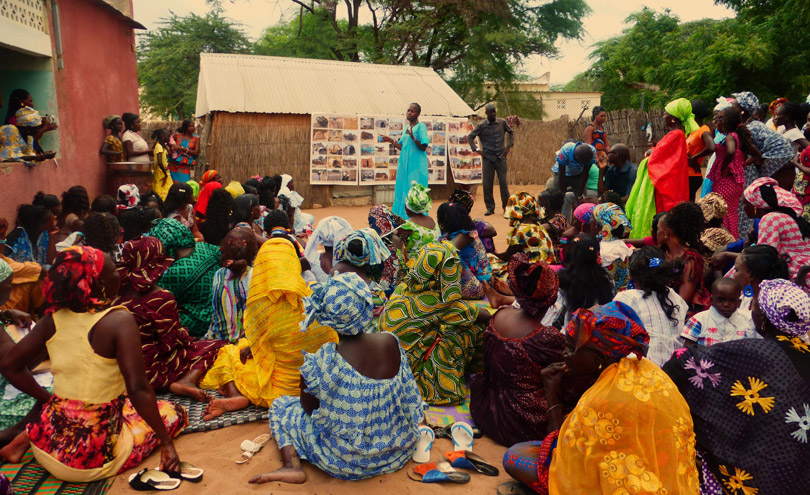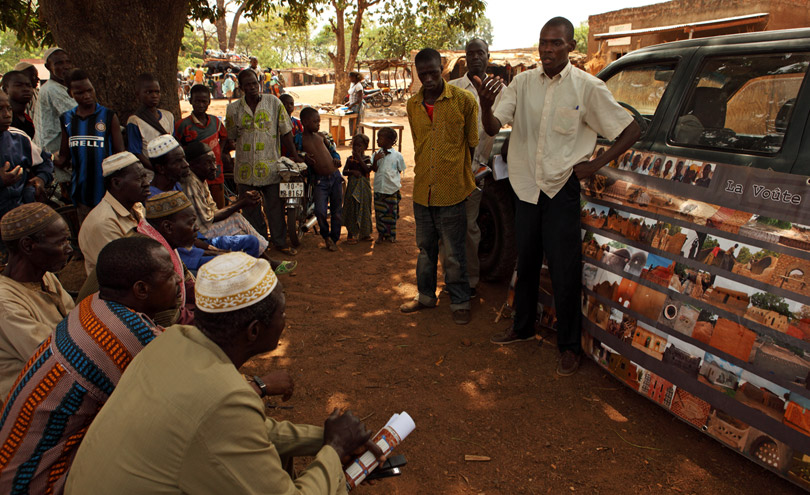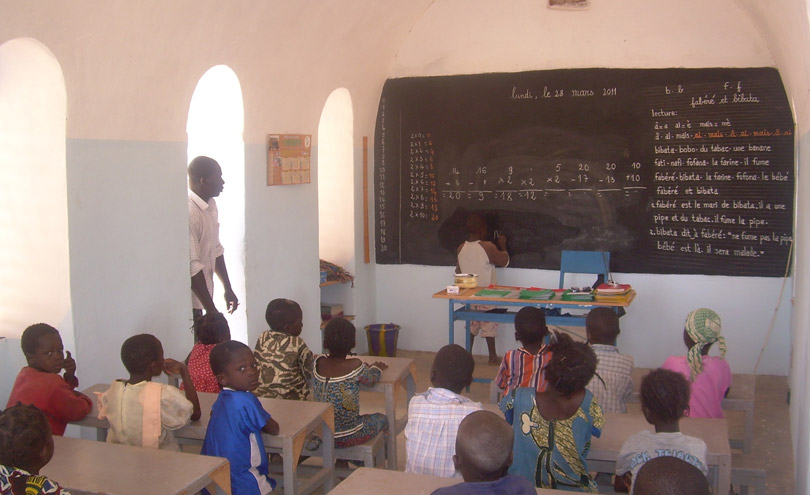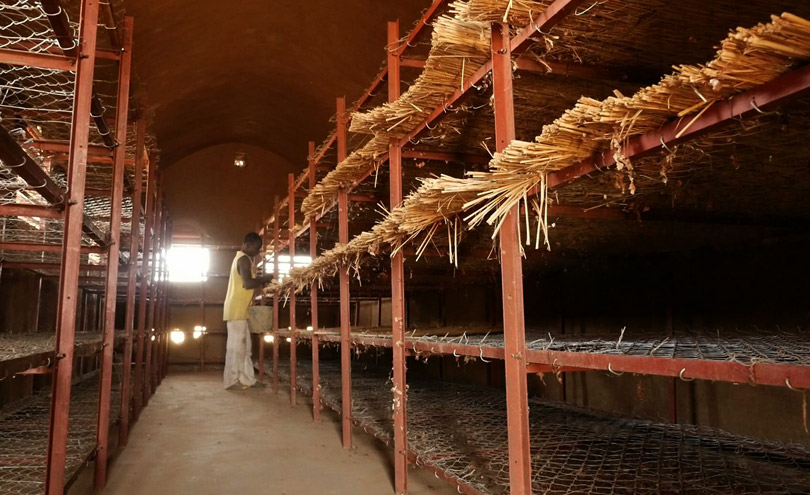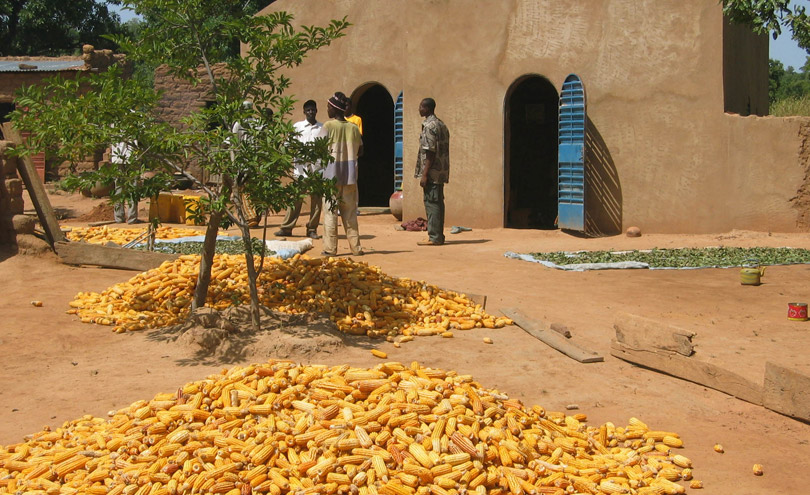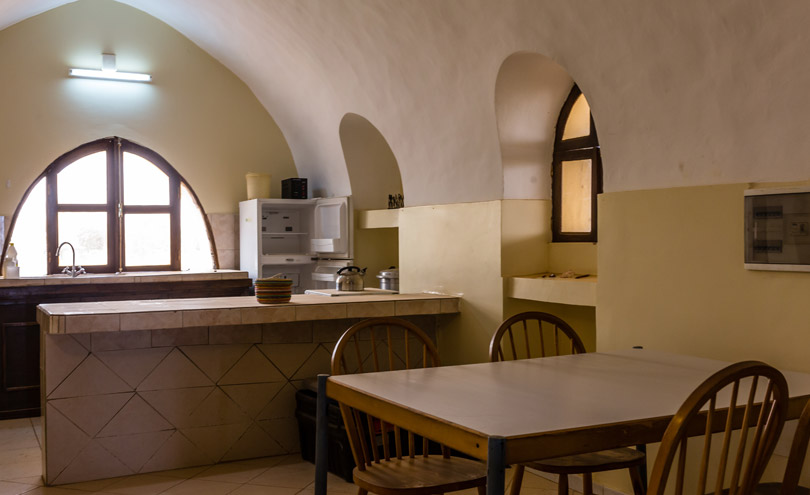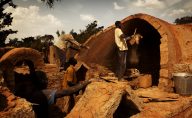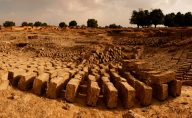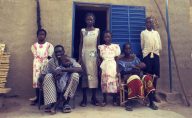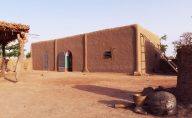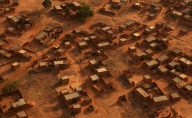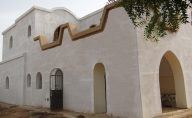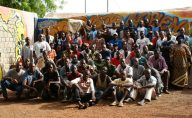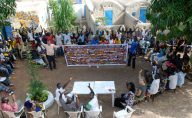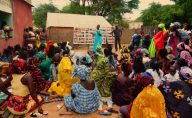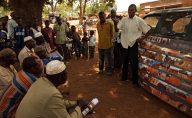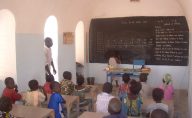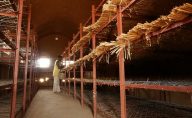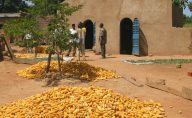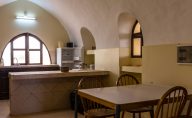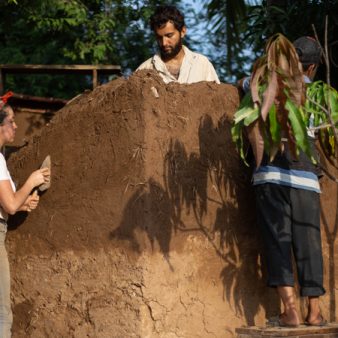Project Description
The project revives an ancient architectural approach to overcome the problem of unsuitable materials being used for roofs in houses in the Sahel. Traditionally house roofs were timber framed, but deforestation and the increasingly arid environment led to a scarcity of timber. In its place metal girders, concrete and sheet metal were used. These provide poor heat insulation, have to be imported at great expense and have high embodied energy.
The Nubian Vault Association’s programme “A Roof, a Skill, a Market” promotes a sustainable and affordable alternative: the vaulted earth roof. This approach uses sun dried mud bricks to create a vaulted roof that supports itself and so doesn’t need supporting beams or joists. The design borrows building techniques and materials used in ancient Egypt. A house built using this technique is more comfortable, healthy and robust than one with a sheet metal roof. It is also cheaper and can be made from freely available local materials. The project started in Burkina Faso but has spread to other parts of Western Africa including Mali, Senegal, Benin, and Ghana.
A previous submission to the World Habitat Awards from the Nubian Vault Association for ‘Earth Roofs for the Sahel’ – which was a finalist in 2009 – focused on the initial stages of this work in Burkina Faso, Mali and Senegal. This submission describes how the Nubian Vaults programme has developed and achieved greater impact though the process of scaling up and the transfer of the programme to two other West African countries via training, capacity building and network development.
This market -based programme aims to generate, grow and sustain the local supply and demand for the Nubian Vaults via three interconnected concepts:
- a Roof (referring to the development of appropriate housing within a local housing market),
- a Skill (i.e. supporting the training of masons and entrepreneurs),
- a Market (creating economic opportunities by encouraging those involved in the housing market to take up this solution).
The Nubian Vault Association works through pan-African collaborations and knowledge exchanges between a wide range of actors (masons, project leaders and key stakeholders) in order to progress the work at a regional level and learn from different experiences.
Since its inception, the association has constructed 2,000 buildings, and housed 24,000 beneficiaries in five countries, trained 440 masons and 400 apprentices, contributed 2.4 million euros (USD $2.6 million) to local economies and saved an estimate of 65,000 tons of CO2 equivalent (calculated over a 30-year lifespan of the building).The core target group for the programme are rural populations of West Africa, living on less than USD $2 per day and outside formal economies. But, the concept is flexible and appropriate for various uses and types of clients: urban and rural, private and community, low and high income. The association adapts the technical research undertaken in order to adjust their offer and techniques to these differing variety of needs.
There are several groups who benefit from the Nubian Vault Association programme:
- Local populations with access to affordable and suitable alternative housing and improved livelihoods.
- Women and children, in particular, are the primary users of houses and courtyards.
- Local young people have access to vocational training, helping them to find a place in the workplace regardless of their previous level of education. Most of the apprentices and masons are seasonal farmers, with little income security. The jobs within the programme provide them with and additional income during the off-season; masons also learn from other masons from different west-African countries, enriching their experience and knowledge.
- Local artisans and building companies benefit from a new product which enhances their competitiveness in a green growth context. The Nubian Vaults are low-tech and cost-effective, an ideal business solution.
- Community members are trained as ‘key people’ – in charge of liaising with other members of the community, and through the programme they learn new skills of community organising and awareness-raising.
- Local stakeholders using offices, shops, agricultural facilities, classrooms, health centres etc. gain access to adequate and appropriate infrastructure and increased levels of comfort.
Aims and Objectives
The main purpose of the programme is to help as many people as possible across the Sahel region of Africa access appropriate (affordable, decent and durable) housing. The programme also aims to boost the local economy, create jobs through the training of masons and reduce the impact of climate change. Ultimately the association’s goal is to significantly scale up the programme so that it delivers 300,000 homes and trains 60,000 masons by 2030.
Context
Housing is precarious for the majority of the population of the Sahel Region. Incomes are low and the local economy is weak. Urban growth and deforestation have led to the disappearance of the natural timber resources used in traditional architecture. Alternatives to traditional housing construction such as the materials used (cement, steel, corrugated iron roofing) and the monetary systems involved (imports, use of cash), have failed to deliver sustainable housing to the majority.
Sahelian societies are characterised as predominantly rural (80%) and are mainly subsistence farmers. These populations struggle to meet their daily basic needs and have a significant need for income-generating opportunities. Political involvement is usually weak, yet the interest in better housing solutions using local materials has recently grown, given the challenges posed by climate change. The National carbon reduction policies in Burkina Faso and Senegal specifically mention the Nubian Vault as an appropriate solution for sustainable development.
Key Features
The roofs are affordable because they use widely available material, and communities participate in the construction. For example a 25 m2 Nubian Vault in Burkina Faso would cost about 450 euros (USD $500), of which 300 euros (USD $332) is provided by the client in materials and sweat equity. By comparison, a cement and iron roof in the same area would cost about 1,000 euros (USD $1,107).
They are environmentally sustainable. Materials have low embodied carbon because they are locally available reducing the need for transport. They reduce the local demand for timber which helps reduce the threat of felling trees. The techniques are embedded in local traditions as a revised version of a vernacular form of architecture. These offer a great degree of energy-efficiency and thermal stability. The strategic approach taken by the association is to create and sustain an affordable local market for the Nubian Vaults solution, both in formal and informal ways, in order to make it accessible to as many people as possible.
The initial dissemination methodology is focused on pilot villages, in which agents of the Nubian Vault Association supported by a ‘community stakeholder’ (a key member of the community) conduct awareness-raising activities in order to generate an initial demand amongst potential clients. The community stakeholder is a person with a certain degree of influence in the area, who believes in the value of the vaults as a solution for housing, employment and economic development and who has the capacity to convince others within their own communities. Typically, this person is a farmers’ group leader, or someone already involved in a similar organisation. Many of these key people are women. Their role is central to creating more opportunities to disseminate the concept. Similarly, local Civil Society Organisations play a key role in the dissemination of the concept and growth of a local market for the vaults. This dissemination also happens in parallel to the training of masons through apprenticeships and in some cases this training is delivered by masons from other countries where the project is at a more advanced stage. From these villages the Nubian Vault concept is spread to surrounding communities in order to stimulate a local market for the solution. The masons themselves participate in this dissemination by promoting it through their networks and activities.
In terms of spreading across the region: in the early stages of the programme, new countries (Mali, Senegal) came on board in an ad hoc way at the invitation of local NGOs. But as the project has reached maturity, it has made more strategic choices regarding which countries to work in. Representatives of the programme have undertaken exploratory missions to find out about that the quality of the earth, rainfall levels, types of beneficiaries and the interest levels of potential partners.
For each new country, an international volunteer is trained to lead the implementation by staff from the Burkina Faso office. As trainees participate directly in the daily activities of that office, overheads and training costs are kept low. A strategy for regional duplication is established from the start, to maximise dissemination opportunities, according to resources and relevance. A national team is put together to conduct awareness-raising activities among the local population generating a demand for the vaults and interest in training masons and other building professionals and among local civil society as well as local, regional and national institutions and private sector organisations.
One of the first actions when starting in a new country is building a new office. This itself is an important part of the programme, as the construction of this office serves as an opportunity to train local apprentices in the technique. The finished building becomes a demonstration model of the concept. The land on which the offices are built is not bought by the Nubian Vault Association but granted rent-free to the organisation by local landowners, in exchange for the transfer of the building ownership after an agreed term (around 10 years).
In recent years, building upon its success, the programme has developed new strategies to stimulate the market and reach as many people as possible:
- They have developed more extensive technical and entrepreneurial training for masons enabling them to increase production every season and to successfully embed their work into their local market.
- The programme also encourages other organisations to include the vaults into their construction projects.
- The programme has introduced microcredits and subsidies to improve access to housing for those for whom the low cost of a vault is still too high.
- Regular meetings of masons and organisations are held across the Sahel region so people can exchange experiences and increase their collective knowledge and to provide a platform for people to report back on progress and share achievements.
A key aspect of the programme is that it supports the relationship between masons and clients. It does this by marketing the concept of the vaults to the public in order to stimulate demand. It also mediates between masons and clients where there are misunderstandings and disputes. This helps reduce the risk of the mason leaving the work unfinished or the client leaving the mason unpaid. The programme also has a vocational training scheme. To date, 440 masons have been trained, there are currently 400 apprentices.
The seasonal nature of the programme complements subsistence farming. Vaults can only be built during the dry season, whereas subsistence agriculture (which is the major source of work) is only possible in the rainy season. Without this scheme there is little work in the dry season, this situation has led to an exodus of young men seeking work. The scheme helps stem this exodus. The Nubian Vaults Association works in an open source manner. This enables it to focus its activities on setting up the programme in new areas and then withdraw leaving the implementation and running of the programme to local people.
What impact has it had?
The programme has played an important role in helping countries of the Sahel region meet their climate change commitments. All United Nations member states were asked to produce commitments for climate change alleviation for the 2015 Paris Climate Conference (called “Nationally Determined Contributions” by the UN). These commitments were expected to show how the countries were going to reduce greenhouse gas emissions and transform practices to adapt to climate change. The Nubian Vault technique was identified by the governments of Burkina Faso and Senegal in their commitments to this conference.
The Government of Mali also chose to identify Nubian Vaults as an appropriate tool for development in its 2016-2018 Strategic Framework for Economic Stimulus and Sustainable Development. This is a public policy framework connecting economic growth and better living conditions for people. In Benin and Ghana the association has led sustained advocacy work throughout 2015 and although the Nubian Vault is not specifically mentioned in the Nationally Determined Contributions of these countries, there is recognition of the importance of the construction and housing sectors in climate change alleviation and adaptation. This represents a step forward in transforming the construction and housing sectors, by recognising that there needs to be a change. Although it is difficult to attribute the impact of this, in Ghana, interest within public sector organisations in the Nubian Vault increased after the Paris Climate Conference.
How is it funded?
The costs of running the programme have increased yearly with the growth of the programme.
- In 2005, the annual budget was of 11,700 euros (USD $13,000), all staff were volunteers.
- In 2012, with three countries in operation, the budget had grown to 366,000 euros (USD $405,000) and the programme had 20 salaried employees.
- In 2016, the budget of 1.4 million euros (USD $1.5 million) covers five countries and a wider range of activities is supporting the work of 70 employees.
The Nubian Vaults Association itself is funded by grants.
- The first major funding received was a grant from the French Foreign Affairs Ministry of 30,000 euros (USD $33,500) in 2003-2004. Prior to that, activities were funded through individual donations and the personal investment of the co-founders.
- In 2015-2016, the association received half its support from public sources (French Development Agency, French Facility for the Global Environment) and half from private and corporate foundations.
Why is it innovative?
The innovation lies firstly in the technology itself, simple, replicable, modular and affordable. The mud bricks are sun-dried, requiring no machinery, and assembled with an earth mortar following a simple technique. The social entrepreneurship approach taken by the Nubian Vaults Association is innovative. Rather than building houses directly, the programme creates and supports a local market in which local masons, apprentices, businesses and clients can operate.
The pan-African nature and cross-country collaboration of the programme is unusual. All country and regional teams meet every season for regular steering committee meeting. Masons in training also have the chance to meet annually at the Masons Congress organised in early June. In 2016, Malian masons were invited to the Burkina Faso congress, with the aim of enhancing skills, capitalising on knowledge and sharing experience from mason to mason across the sub-region. The programme also mobilises the most experienced masons – from Burkina Faso and Mali – to train the first generations of masons in the new countries (Senegal, Benin and Ghana).
What is the environmental impact?
The Nubian Vaults technique facilitates the construction of sustainable, low-carbon buildings and represents a real solution for climate change mitigation and adaptation for the housing sector in West Africa. The main building materials are sun-dried mud bricks, made from locally available earth and the vaults do not require iron roofing sheets, most commonly used in the Sahel despite their environmental inappropriateness (imported, heavy carbon footprint for production and transport).
Earth bricks have very low embodied energy: they are produced without any machinery or fuel wood, on or close to the construction-site and their use is sustainable given the geological nature of these territories. The thickness of the walls and roof and the natural isolation qualities of the earth bricks, provide improved thermal comfort compared to all other construction solutions available in the region. Comparative thermal measurement studies in Burkina Faso and Senegal have confirmed the advantage of the Nubian Vault solution in this respect.
This thermal stability also improves community buildings, such as health centres, schools (longer school hours are possible, in particular in the afternoons, and students and teachers alike benefit of better studying and working conditions), or agricultural facilities (better productivity, longer storage of perishable products). For a 25 m2 building and over a 30-year life cycle, carbon emissions are estimated at 20.5 tons. Nubian Vault constructions also safeguard natural resources, using neither wood nor straw. Traditional houses used both of these materials for the roofs.
Is it financially sustainable?
Costs are expected to grow in line with the growth of the work of the organisation and with the increased demand for its presence in new regions or countries. Expectations for forthcoming budgets are: 2 million euros (USD $2.2 million) in 2016-2017, 2.5 million euros (USD $2.7 million) in 2017-2018 and 3.3 million euros (USD $3.6 million) in 2018-2019.
The Nubian Vault Association maintains its fundraising activities in line with this projected growth. It is preparing to adjust its economic model in the near future to leverage more support from social investors. In keeping with its determination to work with others in an open market, the association aims to create a hybrid for/non-profit model to make it financially viable. This would transfer ownership of the development of a sustainable housing market to local actors (states, training centres, businesses etc.).
The association’s financial partners are not just philanthropists, they are social investors who expect social returns: houses built, masons trained, improved economies and climate change adaptation strategies. Results-Based Financing is a perspective on social investment that focuses on real impact rather than specific projects or processes. This approach allows the Nubian Vaults Association to build a comprehensive, integrated programme aiming to deliver its overarching mission, anticipating its results while providing it with the capacity to adapt its strategy to the context.
What is the social impact?
The Nubian Vault programme has already provided better housing for 2,000 households, with the associated health benefits of improved room temperatures etc., improved living standards and cash savings, especially in very low-income communities and rural areas. Women and children are key beneficiaries of given that they spend more time at home than men.
The nature of the architecture (using raw local materials) encourages the clients and their close circles to participate directly in construction. This helps reduce the costs of the building but also generates a greater sense of control, ownership and achievement, encouraging the custom of community participation and reinforcing traditions of cooperation. The programme has the potential to operate throughout the Sahelo-Sudanian strip, from Senegal to Djibouti, the Nubian Vault has the potential to transform the housing situation of millions of people.
As in most parts of the world, construction in the Sahel is traditionally a male profession. However, Sahelian women are responsible for domestic expenses, including the costs of building the homes. The participation of women in the programme is very important as women have a key role in choosing the type of house the household buys or builds. This does not imply that all decision-making is done by women, but that they often have a key role in household finances. The savings involved in Nubian roofs can help money be redirected to other domestic expenses such as health, education, food, and fuel.
Barriers
A first barrier encountered was the prejudice against earth construction, seen as too poor, too fragile, not modern enough. The Nubian Vault Association’s strongest argument to counter this prejudice has been the vaults themselves, which demonstrate the versatility and modernity of earth architecture. Today, demand is stronger than the supply of masons, proving this challenge has been successfully overcome.
A second barrier is the lack of organisations involved that support the growth of a sustainable housing market. From the start the programme has had a sustained advocacy strategy but the response was initially slow. With environmental challenges and climate constraints, there has been recently a positive change, indicating the early stages of adoption of the Nubian Vaults by organisations and market stakeholders who are looking for sustainable and low-carbon solutions for human settlements. The Nubian Vaults Association continues to capitalise on this progress in order to boost and accelerate replication.
Lessons Learned
The Nubian Vault Association’s experience initially demonstrated that its exclusive focus on rural communities was not sufficiently efficient: for macro-level impacts they realised they needed to reach to all layers of society and include all possible actors (rural, urban, private, institutional etc.).
The strategy is therefore now much broader and the inclusion of beneficiary communities in the activities (key people in communities, masons, training apprentices, local partners replicating the method), is also a key to long-term success, to enable better knowledge transfer and dissemination.
Evaluation
The programme is evaluated annually, through a bottom-up data collection process in which information is incrementally transmitted from field agents to the international coordination, to create a country-level report. External evaluations also take place regularly to provide non-biased analysis. The results demonstrate the programme’s significant success, with a 30% average growth in the Nubian Vault market.
Analysis has shown that demand is now higher than the level of supply achievable with the number of trained masons, indicating potential for further growth. Consequently, the association has established activities aimed at accelerating production (training units, entrepreneurial support and financial incentives for masons) and the adoption of the vaults solution.
Recognition
The work of the Nubian Vaults Association has received considerable international recognition and over 15 awards for its work for better building in Africa.
Nubian Vaults are frequently visited by neighbours and people who have heard of the concept (in the country or abroad, including other continents).
All built Nubian Vaults serve as ‘model homes’ for the programme and act as key dissemination tools by showing the benefits directly (temperature, comfort, solidity, aesthetics etc.).
Transfer
Initiated in Boromo, Burkina Faso, the programme has since spread to other regions of Burkina Faso (2006) and to neighbouring countries: Mali (2007), Senegal (2010), Benin and Ghana (2014). A few pilot construction projects were also led in other countries, Zambia (2010), Mauritania (2014), operated by local or international NGOs.
Its change of scale began in 2007 with the opening of a second country programme and has accelerated since 2014 and the approach has considerable potential for growth (300,000 houses, three million beneficiaries, 60,000 masons and apprentices by 2030). The association hopes to deploy its programme to other countries of the Western Sahelian region, adjacent to its present territories of action. These would include: Togo, Côte d’Ivoire and Guinea and is also looking to expand to other African sub-regions: Sudan, at the Eastern tip of the Sahel-Sudanian strip, and Rwanda, a key location for expansion both towards Eastern and Austral Africa.
The Nubian Vault construction technique is potentially transferrable to any area where there is low rainfall and timber is in short supply. The association is constantly working to disseminate the concept to local community-based organisations.
Imagery credits: C. Lamontagne Cosmos

